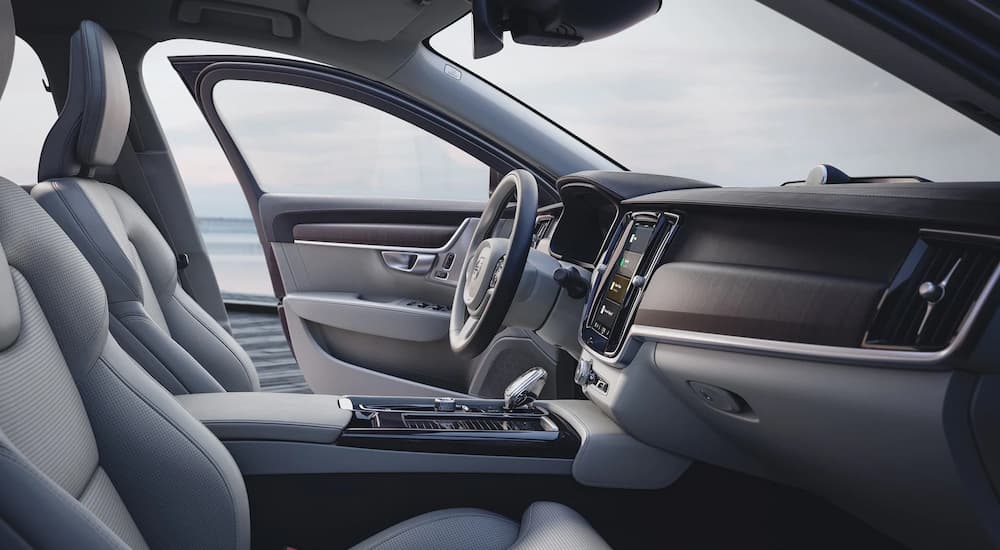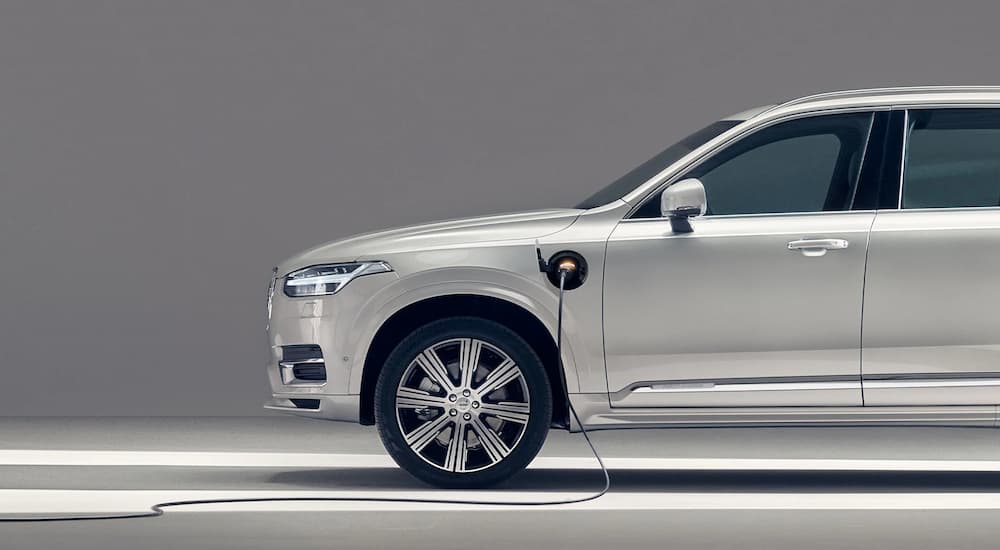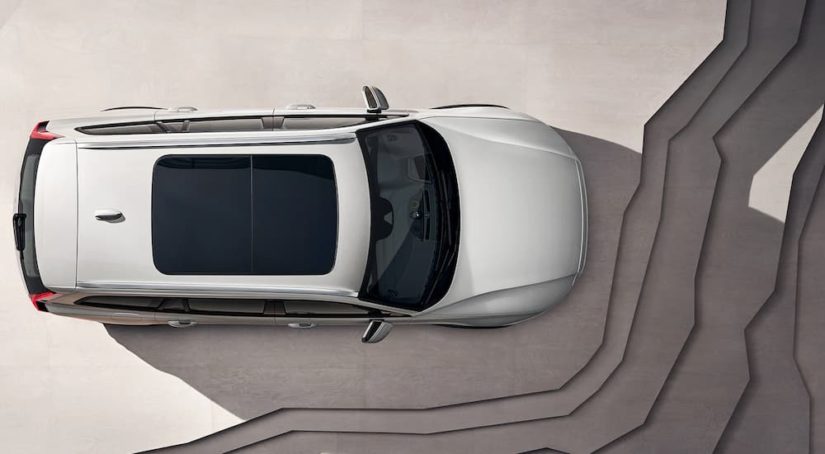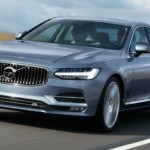There’s a surprising amount of stuff going on at Volvo, the Swedish automaker that might not be the flashiest company, but they’re well known for making safe and reliable cars and SUVs. Volvo has been in the headlines recently for mostly good reasons as they’ve been pushing the technology in their vehicles to new levels and working on boosting ways for their Electric Vehicle (EV) models to recharge. They’ve also been dealing with the same headaches as every other auto manufacturer right now, however, so it’s not all sunshine and lollipops––but things are mostly looking up for them.
Google Assistant Integration
Most of the really interesting stuff going on with Volvo right now has to do with advancing technology and greater integration of various types of technology in their cars. To be honest, this is most of what’s really exciting about the vast majority of the auto industry these days. Unless you’re someone who’s just really into new designs and aesthetics, the advances in tech are where the industry is shining and making its biggest improvements.
One of the most interesting recent announcements from Volvo is the fact that their new vehicles are going to include significant integration with Google Assistant. This is Google’s voice-activated technology that allows you to perform a wide range of tasks by saying, “Okay, Google,” and then asking a question, requesting directions, or issuing commands to perform a task. You’ll currently find it on a wide range of devices, including mobile phones and tablets, along with Google’s devices like Google Home and Google Nest.
Volvo vehicles will not only have integration with Google Assistant itself through the infotainment system but will also work with your other devices that also have it. The goal, from Volvo’s perspective, is to provide more responsive voice-command technology so you can handle a wide range of tasks without ever taking your eyes off the road. This goes well beyond simply asking for directions and includes things like activating seat heaters, adjusting the cabin temperature, and streaming your music, all through voice commands. There’s definitely a race to see what technology and platform will be the dominant one for these kinds of features among manufacturers, so this is a big development that could ripple throughout the industry.

Expanded Over-The-Air Updates
Sticking with Volvo’s infotainment technology for the moment, they recently announced that all of their new models will have over-the-air (OTA) software updates available. Prior to this recent announcement, it was predominantly found on their EV models, which is pretty common in the auto industry. When you look at lineups from a lot of manufacturers, you’ll find their most advanced tech, including things like OTA updates, on their EV models or their high-end luxury options. This marks an impressive opportunity as every Volvo model sold as new now has it as an available feature.
Of course, “available” doesn’t mean “standard,” so you may still find starting trims of Volvo models that lack support for OTA software updates. It’s a step in the right direction, however, as greater access to this kind of technology can improve many features of vehicles. There’s also the risk of this type of thing being abused, of course––look at how the ease of access to software updates has impacted other industries. It’s become standard practice for companies to release software that has serious flaws or barely even functions with the mindset that they can fix it with a patch––that’s not something I want to see become pervasive in the auto industry.
Still, having great access to updates and improvements after you buy a vehicle is a good thing. Will some companies use this as an excuse to ship a substandard product and fix it after you buy it? Almost definitely yes. As long as we don’t accept this as standard operating procedure and let them get away with it, however, we’ll see the best brands brag about how good their software is.
Easy Charging at Starbucks
The first of two exciting announcements from Volvo about charging their EVs is that they’ve recently partnered with Starbucks to create a test network of charging stations. This is going to be a limited thing with DC fast chargers installed at about 15 Starbucks locations between Denver and Seattle. The idea is to test out how popular this would be––the ability to stop in for a cup of coffee and have your vehicle charging right outside while you check your email, cruise social media, or do whatever else people do at Starbucks.
As a comprehensive infrastructure of EV charging stations remains a major concern for a lot of EV owners and potential owners––range anxiety is still an issue––this is an interesting step in trying to fix the problem. The plan is for a charging station to be located about every 100 miles to create an impressive network of chargers on the test route between Denver and Seattle. This should be more than enough range for the vast majority of EVs out there right now.
Installation of the charging stations is set to begin this summer and should be completed by the end of the year so they can start testing this concept. Volvo and Starbucks will be tracking just how popular this program is and assess if their customers actually find this to be a useful concept. If it’s successful, they could expand on this with many more charging stations at Starbucks locations across the country.

Wireless Charging for Cars
Meanwhile, in Europe, Volvo is testing something even more compelling: wireless charging for their EV models. Over the next three years, Volvo is going to create a small fleet of EV models for use as taxis in Gothenburg, Sweden. These test models will all have the ability to charge at certain stations using wireless technology. They’ll still need to be taken to a charging station, but they won’t need to be directly plugged into anything to recharge.
This is an exciting concept that could open up more opportunities for charging in the future, especially in cities where charging stations with cords can be harder to set up. It would be much easier to simply park your EV in a parking spot and have it charged while you’re shopping or inside without ever messing with a cable. These test vehicles and chargers will be able to wirelessly recharge about four times faster than wired 11 kW AC charging and nearly as fast as a physical connection at a DC fast charging station. If these tests go well, we’ll likely see a lot more development of wireless EV charging from Volvo and other companies.
Chip Shortage: Reduced Production
Now for the one bit of bad news coming out of Volvo recently: they’ve updated their expected sales for 2022, and the numbers have gone down. This is due to the ongoing microchip shortage that’s affecting the entire auto industry, so it’s really not much of a surprise. Volvo still expects their sales numbers for the year to be better than last year, but not by as much as they had initially hoped––they’ve also stated they expect the chip shortage to remain a problem throughout 2022, something most experts agree on.
Interestingly, the Russian invasion of Ukraine is not expected to create problems and is not an issue that they expect to cause further shortages. Volvo stated they have limited relationships with suppliers in Ukraine, though they did say that the war has resulted in higher costs for raw materials, energy, and freight throughout the auto industry. They stated they’re going to “work with pricing to mitigate the effects,” which sounds like a nice way of saying, “we’re passing these costs onto our customers.” Time will tell, but for now, expect available Volvo models to still be restricted due to the chip shortage.



